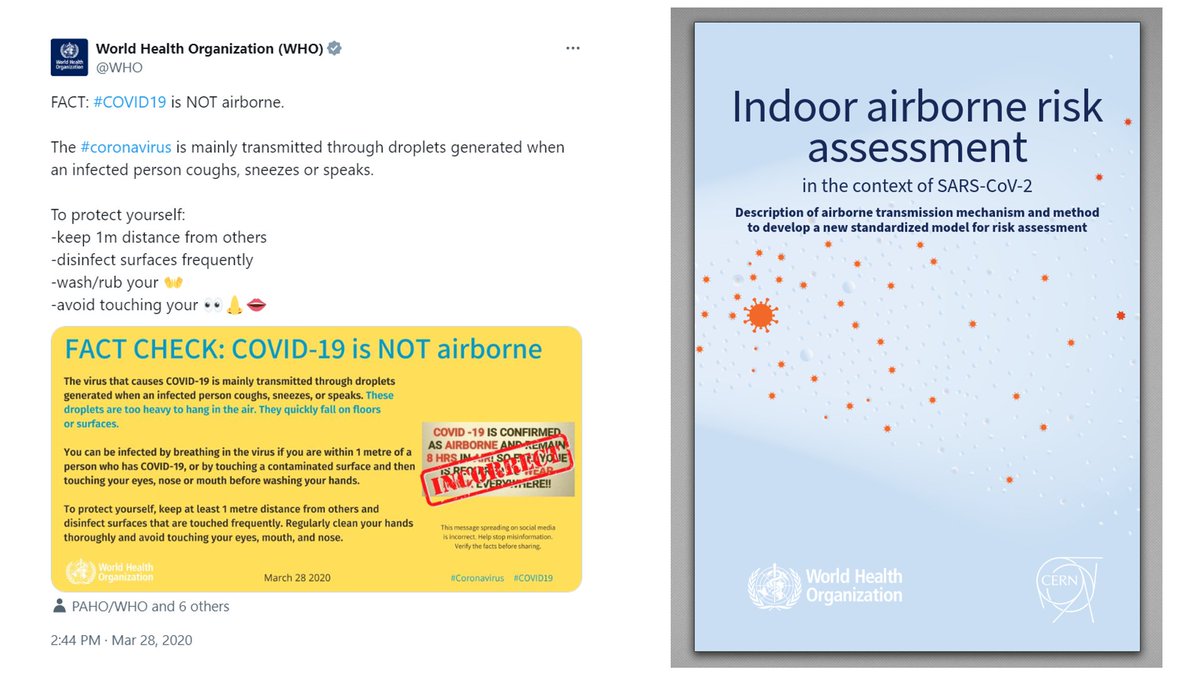Very exciting news on the #corsirosenthalbox front! @CorsIAQ & @CappaSnappa thanks for the (Elfstrom 2021) reference, it made my day! Some comments & questions follow: /1
https://twitter.com/CappaSnappa/status/1481049117736505351
"AHAM recommends that CADR is 2/3 of floor area" Yes, it's floor area = 1.55 x sqft. That's for 8' ceiling with 1 ACH residential outdoor air exchange, described in Annex E of AHAM AC-1 2020: /2 

"Our method allows for determination of CADR values above the 450 CFM upper limit of the standard method AHAM 2014" Yes, larger test chambers are needed!
This has been updated, upper limit now 600 ± 10 CFM except for pollen which is 450 ± 25 CFM /3
This has been updated, upper limit now 600 ± 10 CFM except for pollen which is 450 ± 25 CFM /3

Noise is normally measured in A-weight decibels at 1m, (AHAM AC-2-2006 describes it) and it's nice to see the distribution for any frequency spikes /4 





There's been several CADR tests done on CR boxes that had much lower reported values, however, that should be considered for your references and comparison. See built-envi.com/portfolio/air-… (and next tweet...) /5
I have been able to replicate the flow within 9% with manufacturer's E1 filtration test rating for Total OPS value below (0.3 - 1μm) using the same model of fan and filters and construction. /6 

For these small motors the fan speed & power varies linearly with voltage. Earlier versions of AC-1 used 120 V, newer use 115 V which understates the CADR compared to relative typical use. My home is 119-123 V so I use Variac & manually adjust with true RMS meter display /7 

Fans should have an initial conditioning period. The Lasko 3733 needed overnight. Out of the box it was producing 536 CFM and slowly increased flow. By the next morning it was 710 CFM, and this remained even after being off for two days. /8 

• • •
Missing some Tweet in this thread? You can try to
force a refresh


![States high levels of CO2 and other contaminants ... can contribute to [list of five health effects, such as headaches, fatigue, difficultly concentrating], says CO2 should be below 1000 ppm, then says (incorrectly) that health effects from CO2 occur at levels above 5000 ppm. No, those effects can occur below 5000 ppm. It also states the CO2 concentrations do not indicate a risk of infectious disease transmission in a space. No, ASHRAE's position statement on CO2 states that elevated CO2 concentrations CAN reflect higher risk. Obviously, because it indicates poor ventilation, which IS an i...](https://pbs.twimg.com/media/GO6z_36WQAI7_mj.jpg)







